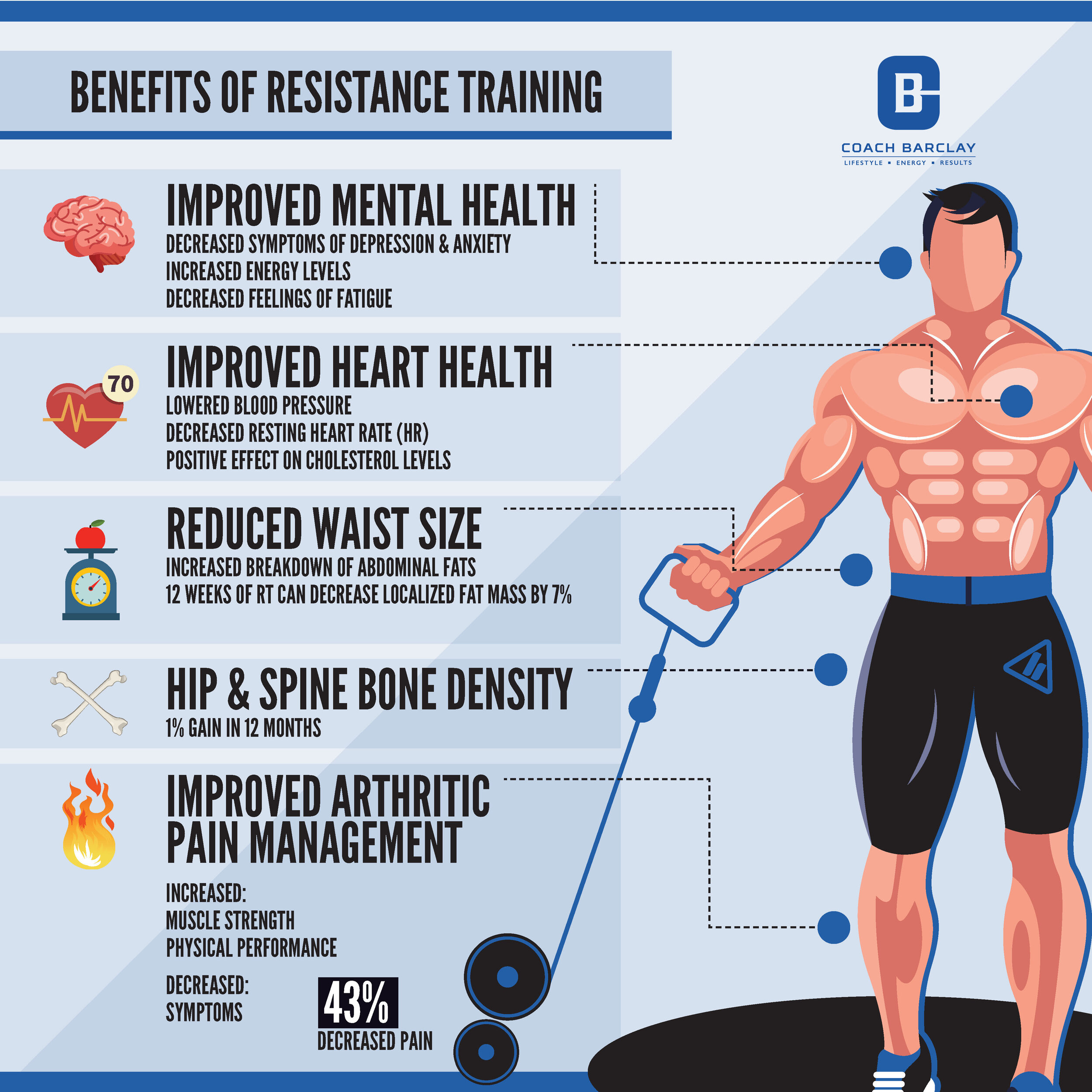BENEFITS OF RESISTANCE TRAINING
BENEFITS OF RESISTANCE TRAINING
Sensible resistance training involves precise, controlled movements for each major muscle group. Learn how this type of exercise can benefit you!
Resistance exercise training has profound effects on the musculoskeletal system, contributes to the maintenance of functional abilities, and can prevent osteoporosis, loss of body mass, lower back pain and other disabilities.
More recent research demonstrates that resistance training may positively affect risk factors, for example, insulin resistance, resting metabolic rate, glucose metabolism, blood pressure and body fat, which are associated with diabetes, heart disease and cancer.
Sensible resistance training involves precise, controlled movements for each major muscle group and does not require the use of massive resistance. Along with brief prescriptive steady-state aerobic exercise, resistance training should be a central component of your training regime.
BENEFITS OF AN EFFECTIVE PROGRAM
HEALTH
Increases HDL - High-Density Lipoprotein (good cholesterol) and decrease LDL - Low-Density Lipoprotein (bad cholesterol).
Reduces risk of diabetes and insulin needs.
Lowers risk of cardiovascular disease.
Lower high blood pressure.
Lowers risk of breast cancer - reduces high estrogen levels linked to the disease.
Decreases or minimizes the risk of osteoporosis by building bone mass.
Reduces symptoms of PMS (Premenstrual Syndrome)
Reduces stress and anxiety.
Decreases colds and illness.
STRENGTH
Increased muscle strength, power, endurance and size. Enhanced performance of everyday tasks. You will be able to do daily tasks like lifting, carrying and walking upstairs with greater ease.
FLEXIBILITY
By working the muscles through a full range of motion, weight training can improve your overall body flexibility. Increased flexibility reduces the risk of muscle pulls and back pain.
LIKELIHOOD OF INJURY
Strong muscles, tendons and ligaments are less likely to give way under stress and are less likely to be injured. Increased bone density and strength reduces back and knees pain by building muscle around these areas.
BODY COMPOSITION
Boosted metabolism (which means burning more calories when at rest). Reduced body fat. Your overall weight may not change, but you will gain muscle and lose fat. Over time you should notice decreases in waist measurements and body fat measurement.
MUSCLE TONE
The conditioning effect will result in firmer and better-defined muscles.
POSTURE
The way you sit and stand are influenced by the health of a network of neck, shoulder, back, hip and abdominal muscles. Stronger muscles can help you stand and sit straighter and more comfortably. Improved balance and stability.
STATE OF MIND
As you begin to notice the positive physical changes in your body and develop a regular exercise routine, your ability to handle stress effectively will improve. Weight training allows you to sleep better, i.e. fall asleep quicker and sleep deeper. Clinical studies have shown regular exercise to be one of the three best tools for effective stress management.
BASIC PRINCIPLES
TYPE OF LIFT
It would help if you tailored your workout to address specific body areas. For example, if you want bigger and stronger arms, you need to use exercises that target those particular muscles.
INTENSITY
The amount of effort, there are several ways to increase the intensity, cut down on rest times, superset, rest-pause, etc. Failing that remember to slow it down and control it.
VOLUME
The number of your workouts or duration. You can increase or decrease the amount by either training more or less often per week or by training for longer or shorter periods.
VARIETY
Switching around your workout routine, vary your workouts by changing exercises, the rep scheme or your training volume. Variety challenges your muscles and forces them to adapt to increased size and strength.
PROGRESSIVE OVERLOAD
Gradually increasing your weights forces your muscles to grow stronger and more significant.
REST
It would help if you rested between sets. If your goal is muscle size or endurance, rest for 30-60 seconds or so. If you want muscle strength, allow up to 2-4 minutes between sets.
RECOVERY
Muscle needs time to repair and grow after a workout. A good rule of thumb is to rest the muscle group for at least 48 hours to allow sufficient recovery time.
GENERAL SAFETY GUIDELINES
Control the weights at all times - don't throw them up and down, or use momentum to 'swing' the weights through their range of motion. Make sure you use correct lifting technique. If you are unsure, consult with a qualified personal trainer.
Incorrect technique can slow your progress, or even cause injuries. Ensure you move the weight through your joint's full range of motion. Not only works the muscle fully, but reduces the risk of joint damage.











Write a line about the post (don’t copy the title)